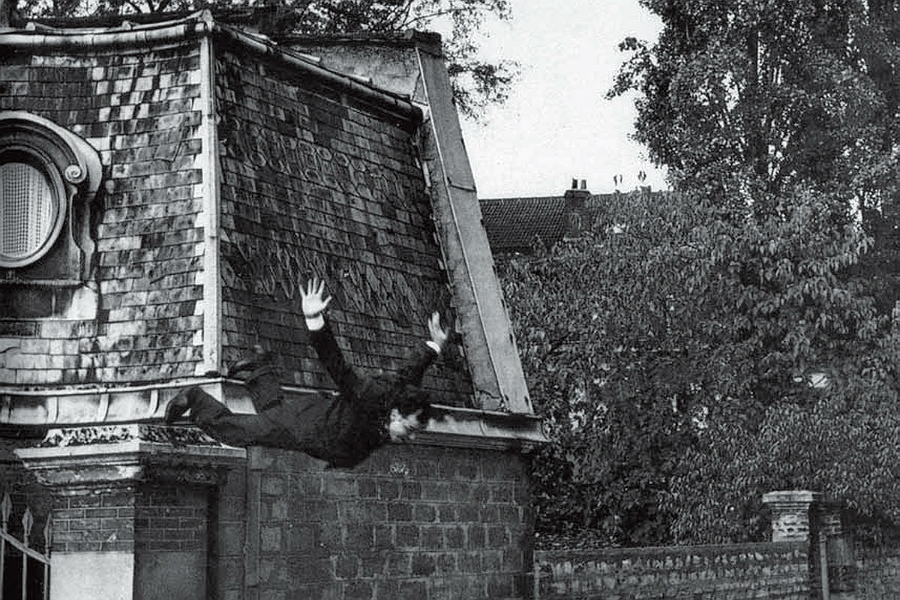My Problem With Photography

The city is awash with photography celebration LOOK/13, but C James Fagan is reluctant to join in…
It’s difficult to pinpoint and I’m not entirely sure if I do have a problem, but there’s something about photography that bothers me like no other artform. I have to ask myself if it’s because I have a chip on my shoulder after studying at a university that side-lined fine art in favour of photography. Perhaps I was a little jealous; I’m a bitter, bitter man after all. However, I would like to think I’m more complex than that.
One of the main issues regarding photography is the fallacy that a photograph is truth. That the camera is a tool for capturing the truth. I would like to think that contemporary photographers are no longer in thrall to this idea – that a camera is somehow an objective magic box for discovering truth. This isn’t the case: the history of the photograph is full of fakery from the trick photographs of the Spiritualists, to the cleverly and dramatically composited images of Frank Hurley to Yves Klein leaping into the void (above). One of the only works that approaches this ideal is John Hilliard’s Camera recording its own condition.
What I’m saying is that, while a camera is objective, the photographer holding it rarely is. In control of what the camera sees, of what the camera records, through the actions of taking a photo they turn the camera into a subjective tool. Clinging to an idea of the photograph as pure truth would be to ignore the camera’s unique ability to focus and manipulate reality. It’s to ignore photography’s fluidity as a medium. The truth of a photograph is equal to that of painting or an installation, though you could argue that an installation is more ‘truthful’ as it relies on direct experience.
Another problematic element is its ubiquity. Try to think of a day where you didn’t see a photograph; from a framed family reminder, the stare of advertising to the images thrown up online. Roland Barthes talks about this in his text Camera Lucida, saying how the proliferation of images makes them inert. He does go on to describe a relationship that developed between him and these images, viewing them until one pricks his interest, or as he puts it the studium produces a punctum.
What does this mean? Is photography a victim of its own success? What does it mean when photographs are displayed in a gallery space? Does that mean these images prick our interest, and what makes these photographs different or more important to the images in myriad magazines? The real question is what constitutes a photograph? Skill, subject matter, where you view the photograph, and is there a set of criteria which can be applied to any photograph?
This is a hugely complex issue, especially when individuals are able to produce hundreds of photographs at the touch of a button. A photograph isn’t simply the result of an alchemic process trapping light on a surface; it has become something else. A photographic image can be endlessly reproduced and spread across different mediums and in different formats from ink to bits. Is there a singular item you can point to and say ‘that is a real photograph’ and because of this there is a fracturing of meaning and an echo of Baudrillard’s ideas of simulacra.
Basing your criteria of what makes a photograph on the idea that they should capture the truth, does that then make the millions of people who take pictures and spread them across social networks with their smartphones some of the best photographers of our generation?
This could be the time to ask not only what constitutes a photograph but what constitutes a photographer.
A great criticism of people who use their smartphones to record their experiences is that they are mediating their experience of the world, and therefore distancing themselves from it, which gives rise to another troubling aspect. When we experience a photograph, whether it be of a war zone or a party, we are passive observers, observers of someone else’s observations, removed from the people or events in the photograph. Even the photographer is removed from the events taking place in front of them, once more bringing subjectivity into play.
Even the ‘honesty’ of the subjects can be called into question, for if a person is being photographed they are (usually) aware of this. As Barthes noted: “once I feel myself being observed by the lens, everything changes…” He’s not alone. When placed in front of a lens, our behaviour alters in the hope that the camera will catch us at our best. In a sense, the subject and the photographer conspire to create a certain element of reality.
Before I end I would like to speculate that part of a photograph’s ‘truth’ doesn’t lie within the process of its creation. Rather it is possible that a picture’s truth can lie within the aging process. One unique element is its transformation into an object that will become a conduit of memories and nostalgia. They become tokens which provide a sense of the passage of time, and separated from their origins they become windows into unknown worlds. This perhaps is the one thing that can define a photograph.
Ultimately (and despite around 1000 words) I don’t know what my problem is; there are many issues inherent in photography as with any artform. Maybe I should cut it some slack; it’s still a reasonably young medium after all and exists in a time where the technology used to produce it is ever more accessible, thus enabling seemingly infinite amounts of images to be created. This hints at the paradox of photography, that it is a democratic art form, but it is this very democracy which threatens to overwhelm it.
This is something that current and future photographers will have to deal with. For now, our relationship remains complicated.
C James Fagan
LOOK/13 photography festival continues at various venues until 15th June





